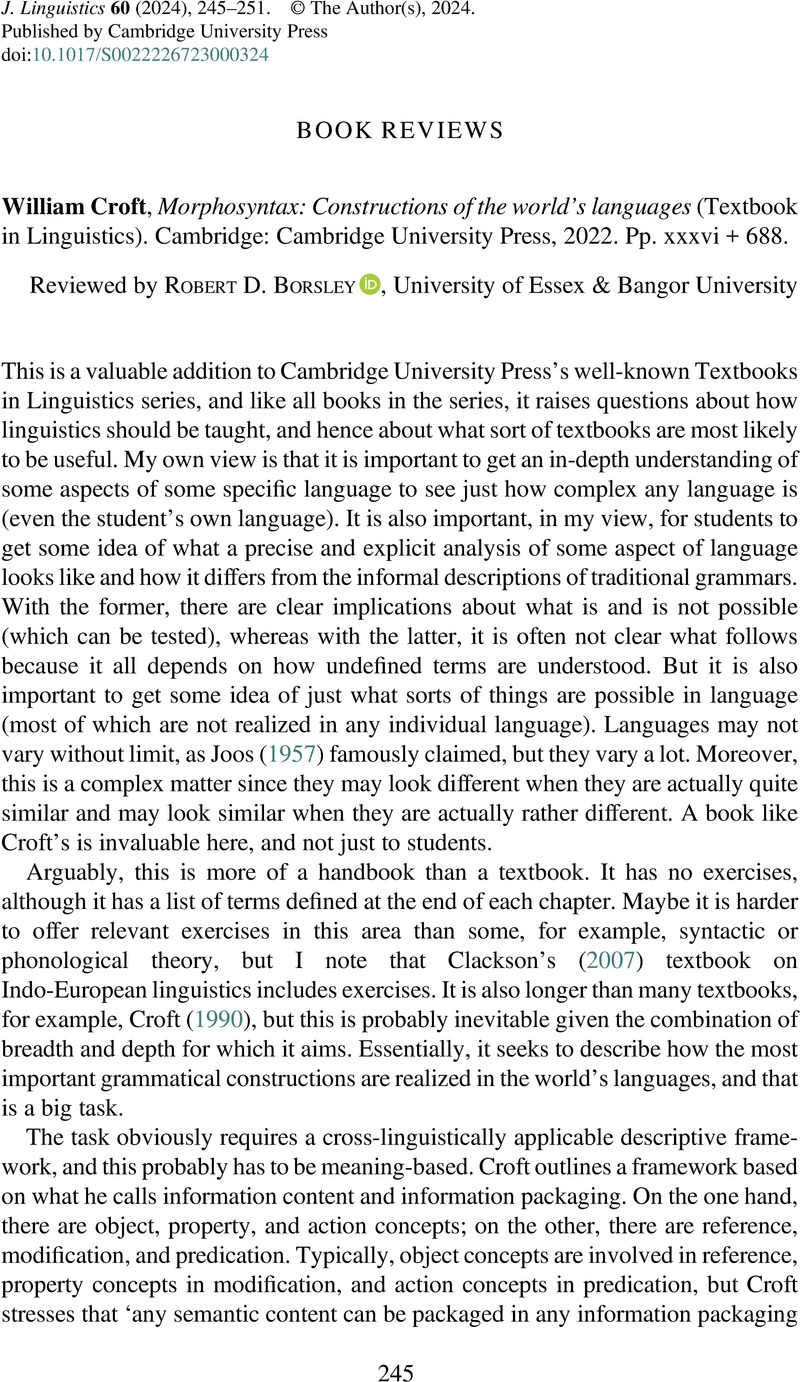No CrossRef data available.
Article contents
William Croft, Morphosyntax: Constructions of the world’s languages (Textbook in Linguistics). Cambridge: Cambridge University Press, 2022. Pp. xxxvi + 688.
Review products
William Croft, Morphosyntax: Constructions of the world’s languages (Textbook in Linguistics). Cambridge: Cambridge University Press, 2022. Pp. xxxvi + 688.
Published online by Cambridge University Press: 02 January 2024
Abstract
An abstract is not available for this content so a preview has been provided. Please use the Get access link above for information on how to access this content.

- Type
- Book Review
- Information
- Copyright
- © The Author(s), 2024. Published by Cambridge University Press
References
Abeillé, Anne & Borsley, Robert D.. 2008. Comparative correlatives and parameters. Lingua 118, 1139–1157.CrossRefGoogle Scholar
Borsley, Robert D. 2020. Comparative syntax: An HPSG perspective. In Bárány, András, Biberauer, Theresa, Douglas, Jamie & Vikner, Sten (eds.), Syntactic architecture and its consequences I: Syntax inside the grammar, 61–90. Berlin: Language Science Press.Google Scholar
Borsley, Robert D. & Newmeyer, Frederick J.. 2009. On subject–auxiliary inversion and the notion “purely formal generalization”. Cognitive Linguistics 20.1, 135–143.CrossRefGoogle Scholar
Clackson, James. 2007. Indo-European linguistics. Cambridge: Cambridge University Press.CrossRefGoogle Scholar
Joos, Martin (ed.). 1957. Readings in linguistics: The development of descriptive linguistics in America since 1925. New York: American Council of Learned Societies.Google Scholar
Wilson, Deirdre & Sperber, Dan. 1988. Mood and the analysis of non-declarative sentences. In Jonathan Dancy, J. M. E. Moravcsik & Taylor, C. C. W. (eds.), Human agency: Language, duty and value, 77–101. Stanford, CA: Stanford University Press.Google Scholar



